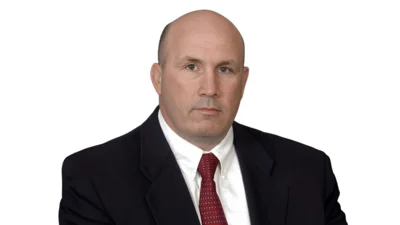With tuition rising and going more often to support the mounting debt crisis in Illinois’ public colleges and universities, prospective students are finding the institutions less attractive as stepping stones, a political scientist said during a recent radio interview.
"The rungs on the ladder of upward mobility are getting further apart," Dan DiSalvo, a senior fellow at the Manhattan Institute and political science professor at City College of New York, said on "Illinois Rising." "It's getting a little trickier, a little bit riskier, a little bit more difficult for certain students."
The situation is putting real pressure on states, including Illinois, to try to balance the needs of retirees with the needs of students, DiSalvo said.

Manhattan Institute Senior Fellow and City College of New York Political Science Professor Dan DiSalvo
"If you're not getting those educated students, and they're not staying in your state, that's going to make your state's economic growth prospects in the future much lower," he said. "That's the real trade-off here."
Illinois Rising is co-hosted by Illinois Opportunity Project co-founder Dan Proft, a principal of Local Government Information Services, which owns this publication.
Pension costs in Illinois have made public universities in the state unaffordable for many students and parents, with more than half of the money spent in higher education going to retirement costs. While there is a nationwide pension crisis at public universities, the problem is especially egregious in Illinois, where it is part of a massive overall pension crisis that has left Illinois with the lowest credit rating in the nation.
DiSalvo co-authored a recent study that found higher education funding per student has been dropping significantly because of rising state pension debt. From 2000 to 2016, public universities across the country lost 25 percent of their state funding per student, while student debt increased significantly.
The same report said spending for public-worker pensions has been driving these budget cuts. Total state expenditures and liabilities increased by an average of 61 percent between 2008 and 2015, while per-student higher education spending decreased by an average of 22.4 percent.
"We found in our report that a lot of people have been wringing their hands and are upset about this long-term trend that really has picked up steam in recent years of cuts in funding to public colleges and universities," DiSalvo said. "While there's much hand-wringing, few people have asked, 'Well, why are they doing that?' That's what our report tries to get at."
The report looks at budget pressures on states to fund pensions, DiSalvo said.
"The cost of which, since the recession, we found in percentage terms, has increased the most," he said. "And the only thing that's really been on the chopping block has been higher education. The states are faced with a real generational problem: You've got to pay for retirees, but you also want to support the next generation of students. The result has been paying for the retirees and passing along more costs to students and their families, which has led to higher tuition."





 Alerts Sign-up
Alerts Sign-up